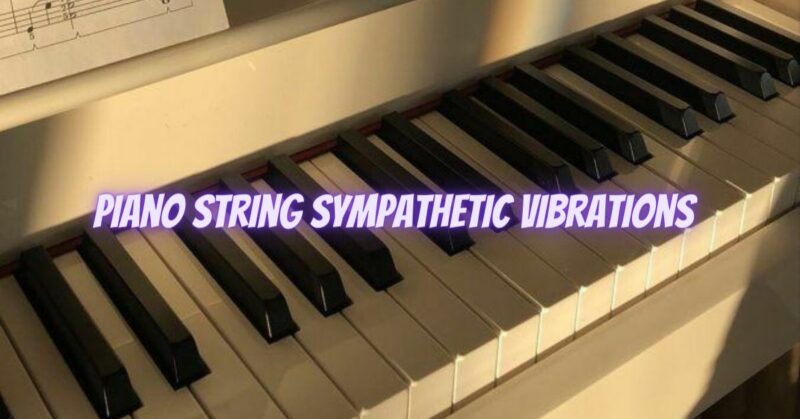When a piano is played, it’s not only the keys that create sound; the entire instrument comes to life. The vibration of each string produces a fundamental pitch, but there’s more to the story. Piano strings are not isolated entities; they interact with each other in a phenomenon known as sympathetic vibrations. These hidden harmonies add depth and complexity to the piano’s sound, creating a musical tapestry that resonates with both players and listeners. In this article, we’ll explore the fascinating world of piano string sympathetic vibrations and understand their significance in shaping the instrument’s unique timbre.
What are Sympathetic Vibrations in Piano Strings?
Sympathetic vibrations occur when a vibrating string induces another string, or several strings, to vibrate at the same or related frequencies. This phenomenon is most pronounced in pianos due to their design, with multiple strings per note, particularly in the upper registers. When a note is played, the corresponding strings begin to vibrate, and the energy from these vibrations spreads to neighboring strings, causing them to vibrate sympathetically.
Significance of Sympathetic Vibrations in the Piano:
- Enriched Resonance: Sympathetic vibrations enhance the resonance of the piano, giving it a fuller and more resonant sound. This effect is most evident when sustaining pedal is used, as the vibrations of one note will continue to influence others even after the key is released.
- Harmonic Enrichment: As sympathetic vibrations reinforce certain frequencies, they enrich the harmonic content of the piano’s sound. This contributes to the overall complexity and depth of the music being played.
- Extended Decay: The duration of the sympathetic vibrations extends the perceived decay of notes. This phenomenon is particularly noticeable in sustained chords, where the interplay of sympathetic vibrations creates a beautiful lingering effect.
- Cross-String Resonance: In grand pianos, the longer strings in the bass section can cause sympathetic vibrations in shorter strings tuned to the same pitch in the higher registers. This creates cross-string resonance, which further enriches the sound.
- Intertwined Melodies: When multiple notes are played simultaneously, sympathetic vibrations create subtle harmonies that intertwine with the main melody, adding a layer of complexity to the music.
Harnessing Sympathetic Vibrations:
Piano technicians are skilled in optimizing the effects of sympathetic vibrations. They carefully regulate the tension and length of the strings to ensure proper interaction and harmonization. Additionally, voicing, or shaping the hammers, can influence how sympathetic vibrations are activated and perceived, ultimately affecting the tonal balance of the instrument.
Conclusion:
The world of piano string sympathetic vibrations is a hidden treasure of harmonies and intricacies. As players and listeners, understanding and appreciating the significance of this phenomenon can deepen our connection to the instrument and the music it produces. Sympathetic vibrations enrich the piano’s sound, creating a captivating and immersive musical experience. As you play or listen to a piano, take a moment to appreciate the intricate web of sympathetic vibrations that brings the instrument to life, and immerse yourself in the fascinating world of harmonies that lie beneath the surface.


